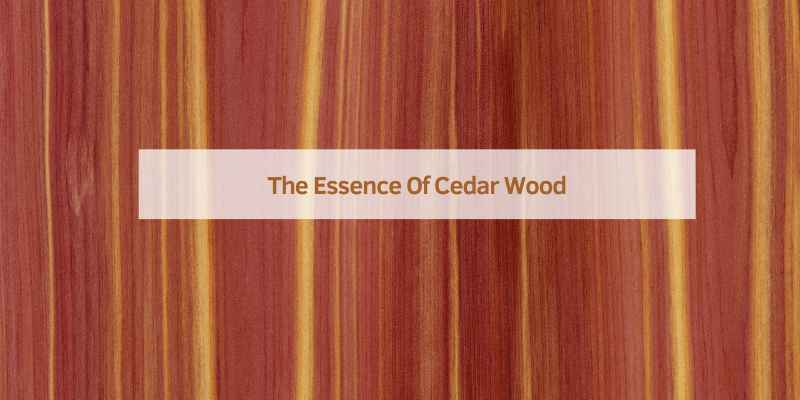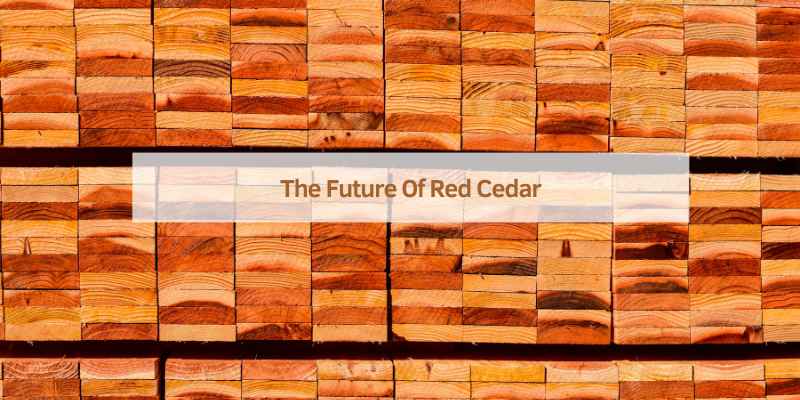Cedar wood appears red due to its high content of naturally occurring compounds called tannins. Tannins give the wood its distinctive reddish hue.
Cedar wood is prized for its rich, warm color and aromatic scent. The presence of tannins not only gives cedar its red color but also provides natural resistance to decay and insects. This makes cedar a popular choice for outdoor furniture, decking, and other applications where durability is essential.
Its aesthetic appeal and practical benefits make it a favorite among woodworkers and homeowners alike. Cedar’s unique properties and stunning appearance ensure that it remains a sought-after material in various industries. Whether used in construction or craft, cedar wood’s distinctive red hue adds a touch of elegance and resilience.
The Essence Of Cedar Wood
Cedar wood is known for its rich, red color. This unique hue comes from natural oils in the wood. Cedar is also famous for its pleasant scent. The wood is very resistant to decay and insect damage. These properties make it a popular choice for furniture and building materials. Cedar wood is also lightweight but very strong. It is easy to work with and holds nails and screws well.
Cedar wood has a long history of use. Ancient civilizations used it for building temples and ships. Its durability made it a valuable resource. Cedar was also used in religious rituals. Many cultures believed it had sacred properties. The Egyptians used cedar oil in their mummification process. Today, cedar remains an important material in many industries.

The Science Of Cedar’s Hue
Cedar wood gets its red color from natural chemicals. These chemicals are called thujaplicins and tannins. Thujaplicins act as a natural preservative. They keep the wood from rotting. Tannins also help protect the wood. They give the wood its rich, red color. Both chemicals make cedar wood special and strong.
Heartwood is the center part of the tree. It is older and darker. The heartwood has more thujaplicins and tannins. This makes it redder and more durable. Sapwood is the outer part of the tree. It is younger and lighter. The sapwood has fewer chemicals. It is paler and not as strong. Both parts together give cedar wood its unique look.
Environmental Influences On Cedar Coloration
Sunlight and air exposure cause cedar wood to develop its distinct red hue. Natural oils and tannins also contribute to this unique coloration.
Climate Impact
Temperature changes can affect cedar wood color. Cold climates often result in deeper red hues. Warm climates may produce lighter shades. Humidity levels also play a role. High humidity can darken the wood. Low humidity might make it lighter. Sun exposure is another factor. Direct sunlight can cause fading. Less sunlight helps maintain rich colors.
Soil And Nutrient Effects
The type of soil impacts the wood’s color. Rich soil can enhance the red tint. Poor soil might dull the hue. Nutrient levels are crucial too. High nutrients often lead to vibrant colors. Low nutrients can result in pale shades. Mineral content in the soil also matters. Iron-rich soil can deepen the red color. Low iron levels might make it less intense.
Genetic Factors In Cedar Redness
Cedar wood’s red hue originates from genetic factors influencing its chemical composition. These genetic traits produce rich, reddish pigments.
Species Variations
Different cedar species show various shades of red. Western Red Cedar is famous for its deep red color. Eastern Red Cedar has a lighter, reddish-brown hue. These variations are due to the unique genes in each species. Genetic makeup affects the amount of pigments called tannins in the wood.
Genetic Adaptations
Cedar trees adapt to their environment. Genetic changes help them survive in different climates. These adaptations can influence the wood’s color. Red pigments may protect the wood from harmful sunlight. This makes the wood last longer and keeps it strong.
Cedar Wood In Human Culture
Cedar wood is often used in building homes and temples. Its natural oils make it resistant to bugs. Red cedar wood has a beautiful color that many people love. This wood is also very strong and durable. It can last for many years without rotting. Many old buildings are made from cedar wood. The pleasant smell of cedar wood is another reason people choose it. Its unique appearance adds charm to any structure.
Cedar wood holds a special place in many cultures. Some people believe it brings good luck and protection. In myths, cedar trees are often sacred. They are thought to connect heaven and earth. Many stories talk about powerful gods living in cedar trees. Ancient people used cedar for rituals and ceremonies. The wood was believed to have healing properties. It was also used to make sacred objects. Cedar wood’s red color is often seen as a symbol of life.
Preservation Of Cedar’s Vibrant Color
Cedar wood needs regular care to keep its red color. Applying a UV-blocking sealant helps a lot. This sealant protects the wood from sunlight. Using a clear wood finish also keeps the color bright. Regular cleaning removes dirt and grime. Dirt can dull the wood’s color over time. It’s best to clean cedar wood with mild soap and water. Avoid harsh chemicals as they can damage the wood.
Cedar wood changes color as it ages. Fresh cedar wood is red and vibrant. Over time, cedar wood turns a silver-gray color. This change is natural. Exposure to sunlight speeds up this process. Using a sealant slows down the color change. Oil-based sealants work well for this. They penetrate deep into the wood. This keeps the red color longer.
Cedar Vs. Other Woods
Cedar wood is red because it contains natural oils. These oils give cedar a unique color. Other woods do not have these oils. Cedar is also more resistant to decay. This makes it better for outdoor use. Cedar is lighter in weight. This makes it easier to work with.
Many industries prefer cedar wood. It has a pleasant smell. This is why it is used for closets and chests. Cedar is also used in building boats. Its resistance to water makes it ideal for this purpose. Cedar wood is more expensive. But its benefits make it worth the cost.
The Future Of Red Cedar
Conservation efforts for red cedar are growing. Many people love red cedar for its beauty. Forests need protection to keep these trees safe. Some groups plant new trees to help. Government laws also help save red cedar forests. Everyone can do something to help these trees. Even small actions can make a big difference.
Scientists study red cedar to learn more. They find ways to protect the trees better. New methods help the trees grow strong. Research shows how climate affects red cedar. Many people work together for this cause. New technologies help in these efforts. The goal is to keep red cedar forests healthy. This helps both nature and people.

Frequently Asked Questions
Why Does Cedar Turn Red?
Cedar turns red due to exposure to sunlight, which causes the natural oils and compounds in the wood to oxidize. This process is known as photodegradation.
Is Cedar Naturally Red?
Yes, cedar is naturally red. Its heartwood has a rich, reddish hue, making it visually appealing and durable.
What Is So Special About Red Cedar Wood?
Red cedar wood is highly durable and naturally resistant to decay and insects. Its rich aroma repels moths.
Is Red Cedar A Real Cedar?
Red cedar is not a true cedar. It belongs to the cypress family. True cedars are in the pine family.
Conclusion
Cedar wood’s red color comes from natural oils and compounds. This unique hue also indicates its durability and resistance to decay. Choosing cedar wood not only adds beauty but ensures longevity. Embrace cedar’s rich, red tones in your projects. Discover the perfect blend of aesthetics and functionality with cedar wood.


